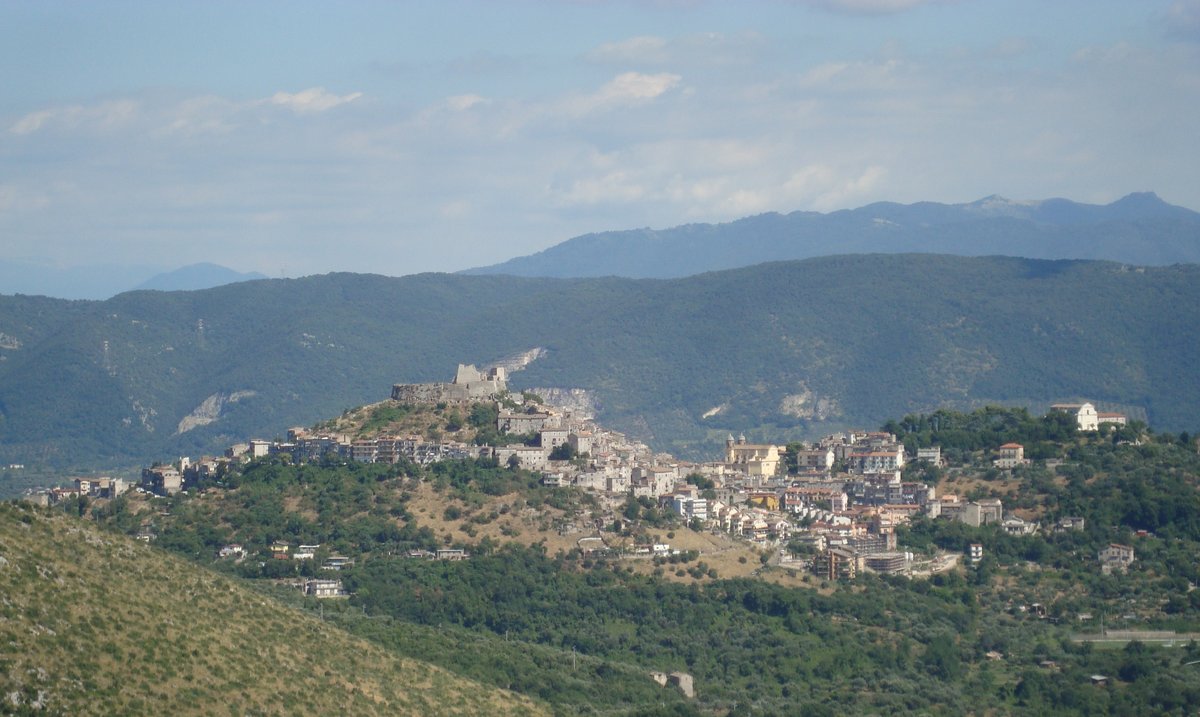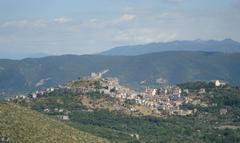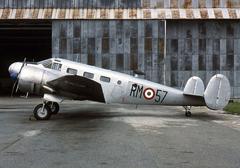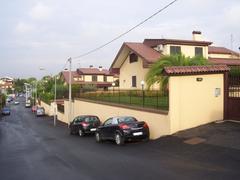
Montecelio Visiting Hours, Tickets, and Historic Sites Guide
Date: 14/06/2025
Introduction
Montecelio, a picturesque hilltop village within the municipality of Guidonia Montecelio in Italy’s Lazio region, invites visitors to experience a unique blend of ancient history, vibrant culture, and stunning landscapes. As one of the oldest continuously inhabited settlements in Lazio, Montecelio’s roots trace back over 6,000 years, from Neolithic communities through Italic tribes and the Roman era (Latium Experience). Today, Montecelio offers an immersive journey through archaeological treasures, medieval fortifications, Renaissance and Baroque architecture, and modern urban planning—making it a compelling destination for travelers seeking authentic Italian experiences.
This guide provides comprehensive information on Montecelio visiting hours, ticketing, accessibility, and guided tours, along with highlights of key historical sites, practical travel tips, and recommendations for cultural and culinary exploration. Whether you are a history enthusiast, nature lover, or culinary adventurer, Montecelio and its surroundings promise a memorable visit.
Table of Contents
- Historical Overview
- Cultural Significance and Heritage
- Visitor Information
- Notable Historical Sites
- Natural Parks and Outdoor Attractions
- Culinary Experiences and Local Life
- Events and Festivals
- Practical Travel Information
- FAQs
- Visuals and Media
- Conclusion and Call to Action
- Sources
Historical Overview
Prehistoric and Ancient Origins
Montecelio boasts a history stretching back millennia, with settlements dating to the Neolithic period (Latium Experience). Its fertile location in the Aniene River valley supported early agricultural communities. During the Roman era, the area flourished as a rural hub, featuring luxurious villas, tombs, and mausoleums. Many vestiges remain visible in the Inviolata Regional Natural Archaeological Park, where visitors can explore ancient roads and remnants of Roman life (Latium Experience).
Medieval Transformation
Following the fall of the Roman Empire, Montecelio was fortified as a hilltop village. Builders reused Roman stones to construct defenses, most notably the Rocca Crescenzi, a medieval fortress that incorporates parts of a 1st-century BCE Roman temple (Italia Italy). The town’s compact medieval streets and stone houses evoke its defensive past and offer an authentic atmosphere.
Renaissance and Early Modern Developments
The Renaissance era brought artistic and architectural advancements. The 15th-century Church of San Lorenzo Martire and the 17th-century Palazzo del Principe exemplify the region’s transition into early modernity (Latium Experience). Baroque and neoclassical churches, such as San Michele Arcangelo and San Giovanni Evangelista, remain focal points for community gatherings and religious festivals (Itinerari nel Gusto).
The Birth of Guidonia: 20th Century Urban Planning
In 1937, the new town of Guidonia was established, designed by rationalist architects to serve the nearby Barbieri airport. This planned community features a distinctive orthogonal street grid, the Torre Littoria, and modern amenities, while integrating with the historic landscape of Montecelio (Latium Experience).
Cultural Significance and Heritage
Montecelio and Guidonia together reflect a rich tapestry of cultural influences. The Inviolata Regional Natural Archaeological Park preserves both natural beauty and archaeological sites, inviting exploration and outdoor activities (Latium Experience). Annual festivals such as the feast of San Michele Arcangelo and the Infiorata flower festival celebrate religious traditions and community spirit (Itinerari nel Gusto). Local artisan shops, bakeries, and markets help maintain centuries-old culinary and craft traditions.
Visitor Information
Montecelio Visiting Hours and Tickets
- Rocca Crescenzi (Medieval Fortress):
Open Tuesday to Sunday, 9:00 AM–6:00 PM. Closed Mondays. Admission: €5 (reduced €3 for EU citizens under 25), free for children under 6. - Inviolata Regional Natural Archaeological Park:
Open daily from dawn to dusk. Free entrance. - Museo Civico “Rodolfo Lanciani”:
Open Tuesday to Sunday, 9:00 AM–6:00 PM. Admission is usually free or nominal. - Hadrian’s Villa (Villa Adriana):
Open daily, 9:00 AM to sunset; tickets around €10 for adults, discounts for EU youth, free for children under 18 (History Hit). - Castello Marco Simone:
Access varies due to events; check the official site for visiting hours. Some tours require advance booking.
Tickets for major sites can be purchased online or at entrances. Combined tickets and group discounts are available for some attractions. Advance booking is recommended during peak seasons.
Accessibility and Travel Tips
- Getting There: Montecelio is accessible by regional trains and buses from Rome (approx. 40 minutes). By car, it is close to the Grande Raccordo Anulare and Via Tiburtina.
- Getting Around: The historic center is best explored on foot; comfortable shoes recommended. Parking is available outside the old town.
- Accessibility: Some sites and streets have steep inclines and cobblestones. Main roads and museums provide reasonable access for visitors with reduced mobility.
Guided Tours and Visitor Services
Local agencies and the municipality offer guided walking tours in multiple languages. Audio guides and brochures are available at tourist information centers. Agriturismi in the surrounding countryside provide immersive experiences such as olive oil tastings and guided hikes (Agriturismo Italia).
Notable Historical Sites
- Rocca Crescenzi:
Medieval fortress with panoramic views, built atop Roman ruins (Italia Italy). - Palazzo del Principe:
17th-century noble residence. - Church of San Lorenzo Martire:
15th-century church with notable artworks. - Churches of San Michele Arcangelo and San Giovanni Evangelista:
18th-century places of worship hosting major festivals. - Castello Marco Simone:
Historic castle and international event venue. - Museo Civico “Rodolfo Lanciani”:
Archaeological museum with Roman and medieval artifacts (The Crazy Tourist). - Hadrian’s Villa:
UNESCO World Heritage Site, a must-visit for Roman history enthusiasts (History Hit).
Natural Parks and Outdoor Attractions
- Inviolata Regional Natural Archaeological Park:
Protected area for hiking, birdwatching, and exploring Roman ruins (Latium Experience). - Riserva Naturale Monte Catillo:
1,300-hectare reserve with trails and panoramic points. - Riserva Naturale di Nomentum:
Woodland and plains west of town for cycling and nature walks. - Veio Regional Park:
Extensive green space with biking and hiking opportunities. - Parco di Villa Gregoriana:
Waterfalls and ancient ruins in nearby Tivoli.
Culinary Experiences and Local Life
Montecelio’s community is known for its warm hospitality and strong traditions. Local bakeries, butchers, and trattorias offer Lazio specialties such as porchetta, cacio e pepe, and pizza bianca. Weekly markets and food festivals showcase regional produce and artisanal crafts (Itinerari nel Gusto). Agriturismi in the hills offer farm-to-table dining and culinary workshops.
Events and Festivals
- Festa di San Michele Arcangelo (September):
Religious processions, open-air masses, and communal feasts. - Infiorata (Corpus Domini):
Streets are decorated with artistic floral carpets (Infiorata Italia). - Sagra della Polenta (Winter):
Culinary festival celebrating local traditions (Sagre Lazio). - Local Markets and Artisan Fairs:
Weekly events featuring fresh produce, crafts, and local products.
Practical Travel Information
- Altitude: 200 meters above sea level, providing cool breezes and panoramic views (DB-City).
- Population: Montecelio has about 5,000 residents; the wider municipality is more populous (Wikipedia).
- Climate: Mediterranean, with hot summers and mild winters. Spring and early autumn are ideal for visits (DB-City).
- Accommodation: From cozy B&Bs and agriturismi to hotels in nearby Guidonia (Italia Italy).
- Photography: Top spots include Rocca Crescenzi, panoramic terraces, and the Infiorata festival.
FAQs
Q: What are Montecelio’s visiting hours?
A: Most historical sites are open Tuesday to Sunday, 9:00 AM–6:00 PM. Parks are accessible from dawn to dusk. Check official sources for seasonal variations.
Q: How do I buy tickets?
A: Tickets are available online and at site entrances. Combined passes and group discounts may be available for some attractions.
Q: Are guided tours available?
A: Yes, multilingual guided tours can be booked in advance via local agencies or the tourist office.
Q: Is Montecelio accessible for visitors with mobility issues?
A: Some sites and streets have steep inclines and cobblestones, but main museums and roads provide reasonable accessibility.
Q: How do I reach Montecelio from Rome?
A: Regional trains and buses connect from Rome; by car, follow the Grande Raccordo Anulare and Via Tiburtina.
Q: When is the best time to visit?
A: Spring (April–June) and early autumn (September–October) offer pleasant weather and coincide with major festivals.
Visuals and Media
For the best visual experience, visit official tourism sites for high-quality images and virtual tours. Recommended alt tags for SEO:
- “Montecelio visiting hours at Rocca Crescenzi fortress”
- “Guidonia historical sites Roman villa ruins”
- “Hadrian’s Villa ruins Guidonia Montecelio”
- “Montecelio historic center panoramic view”
Videos of local festivals and guided tours further enhance the visitor experience.
Conclusion and Call to Action
Montecelio and Guidonia Montecelio offer a rich blend of ancient history, vibrant culture, and scenic beauty. From Neolithic settlements and Roman villas to medieval fortresses and Renaissance churches, the area is a living tapestry of Italy’s heritage. Well-defined visiting hours, accessible ticketing options, and a wealth of guided experiences ensure that every traveler can immerse themselves fully in the region’s charms.
Plan your visit today:
- Download the Audiala app for the latest updates on Montecelio visiting hours, tickets, and guided tours.
- Explore our related posts on Lazio’s hidden gems.
- Follow us on social media for travel inspiration and event alerts.
Embrace the captivating legacy of Montecelio—a destination where the past and present come alive.
Sources
- Montecelio Historical Sites and Visiting Information Guide, 2024 (Latium Experience)
- Montecelio Historical Sites and Visiting Information Guide, 2024 (Italia Italy)
- Montecelio Historical Sites and Visiting Information Guide, 2024 (Itinerari nel Gusto)
- Montecelio Travel Guide 2024 (Wikipedia)
- Montecelio Travel Guide 2024 (DB-City)
- Cultural Significance and Local Life (Comune di Guidonia Montecelio)
- Cultural Significance and Local Life (Lazio Explorer)
- Cultural Significance and Local Life (Visit Lazio)
- Montecelio Visiting Hours, Tickets & Top Historical Sites in Guidonia Montecelio (Places and Things to Do)
- Montecelio Visiting Hours, Tickets & Top Historical Sites in Guidonia Montecelio (History Hit)
- Montecelio Visiting Hours, Tickets & Top Historical Sites (The Crazy Tourist)
- Allevents.in Montecelio, 2024 (Allevents.in Montecelio)


